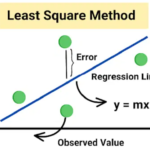
By ATGL
Updated August 26, 2024
Dividend income is a significant part of many investment portfolios. Understanding the nuances of dividend taxation is important for optimizing your investment strategies and maximizing your after-tax returns. This guide provides a comprehensive overview of dividend tax rates in 2024, offering valuable insights to navigate this complex aspect of financial planning.
Difference Between Qualified and Non-Qualified Dividends
Dividends fall into two categories: qualified and non-qualified. This distinction significantly impacts the tax treatment of dividend income.
Qualified dividends meet specific criteria set by the Internal Revenue Service:
- Paid by a U.S. corporation or a qualified foreign corporation
- Investor holds the stock for more than 60 days during a 121-day period that begins 60 days before the ex-dividend date
Non-qualified dividends, also known as ordinary dividends, are those that do not meet these criteria. They include dividends paid by real estate investment trusts (REITs), master limited partnerships (MLPs), and certain foreign companies.
Tax Rates for Qualified Dividends in 2024
Qualified dividends receive preferential tax treatment, with rates tied to long-term capital gains tax brackets. For the 2024 tax year, the rates are structured based on taxable income levels. These rates are particularly important as they directly impact the after-tax returns on dividend-paying investments.
For single filers and married individuals filing separately, the rates for qualified dividends are:
- 0% rate applies to taxable income up to $47,025
- 15% rate applies to taxable income between $47,026 and $518,900
- 20% rate applies to taxable income exceeding $518,900
For married couples filing jointly and surviving spouses, the income thresholds are:
- 0% rate applies to taxable income up to $94,050
- 15% rate applies to taxable income between $94,051 and $583,750
- 20% rate applies to taxable income exceeding $583,750
Heads of households have slightly different thresholds:
- 0% rate applies to taxable income up to $63,000
- 15% rate applies to taxable income between $63,001 and $551,350
- 20% rate applies to taxable income exceeding $551,350
For estates and trusts, which may be relevant for certain investment structures:
- 0% rate applies to taxable income up to $3,150
- 15% rate applies to taxable income between $3,151 and $15,450
- 20% rate applies to taxable income exceeding $15,450
These rates apply to qualified dividends, which must meet specific criteria set by the IRS. Non-qualified dividends are taxed at ordinary income rates, which can be significantly higher.
These graduated rates impact your overall tax situation when developing investment strategies focused on dividend-paying stocks. Consider their total taxable income, including both investment income and other sources, when estimating their effective tax rate on qualified dividends.
Recent Changes in Tax Policy Affecting Dividends
While the Tax Cuts and Jobs Act of 2017 brought significant changes to the U.S. tax code, the treatment of dividends remained relatively stable. However, note that the current tax rates for qualified dividends will expire after 2025 unless Congress acts to extend them.
Additionally, high-income taxpayers may be subject to the Net Investment Income Tax (NIIT) of 3.8% on dividend income, which applies to individuals with modified adjusted gross income exceeding $200,000 ($250,000 for married couples filing jointly.)
Strategies for Minimizing Tax Liability on Dividends
You can use several strategies to improve your tax situation concerning dividend income:
- Hold dividend-paying stocks in tax-advantaged accounts: Using accounts such as Traditional IRAs, Roth IRAs, or 401(k)s can defer or eliminate taxes on dividends.
- Focus on long-term investments: Holding stocks for longer periods increases the likelihood of dividends qualifying for preferential tax treatment.
- Consider tax-efficient ETF investments: Some ETFs are structured to minimize taxable distributions.
- Implement tax-loss harvesting: Offsetting dividend income with capital losses can reduce overall tax liability.
- Explore municipal bond funds: These often provide tax-free dividends at the federal level and potentially at the state level for in-state residents.
Tax Rate on Dividends: Reporting Dividend Income
Investors typically receive Form 1099-DIV from their brokers or companies paying dividends. This form details the amount and type of dividends received during the tax year.
Relevant Tax Forms: Form 1099-DIV and Schedule B
- Form 1099-DIV: Reports dividend distributions from investments
- Schedule B: Used to report interest and ordinary dividends if the total exceeds $1,500
Important Tax Due Dates for Dividend Reporting
- January 31: Deadline for companies to issue Form 1099-DIV to investors
- April 15: Standard deadline for filing individual tax returns, including dividend income reporting
If you’re involved in more complex dividend investing strategies or manage a substantial dividend growth portfolio, you may benefit from consulting with a tax professional to assist with reporting requirements.
Dividend Income Tax Rate FAQs
How Much Dividend Income Is Taxable?
All dividend income is generally taxable unless held in tax-advantaged accounts. The specific tax rate depends on whether the dividends are qualified or non-qualified and the investor’s overall taxable income.
How Can I Avoid Paying Taxes on Dividends?
While it’s challenging to avoid a tax on dividends, strategies such as holding dividend-paying stocks in tax-advantaged accounts, focusing on qualified dividends, and using the 0% tax bracket for qualified dividends (if income allows) can minimize tax liability.
Do You Pay Taxes on Dividends Reinvested?
Yes, reinvested dividends are still considered taxable income in the year they are received, even if not taken as cash. However, reinvesting dividends increases your cost basis in the stock, potentially reducing capital gains taxes when the stock is eventually sold.
Find What You Need To Increase Your Investment Income
Understanding dividend taxation requires detailed knowledge of tax laws and investment strategies. At Above the Green Line, we offer valuable resources, no matter your investment philosophy. Our membership options can provide you access to in-depth analyses, expert insights, and proprietary tools designed to help you make informed decisions in today’s dynamic market environment.
Stay informed, stay strategic, and maximize the potential of your dividend investments with Above the Green Line.






